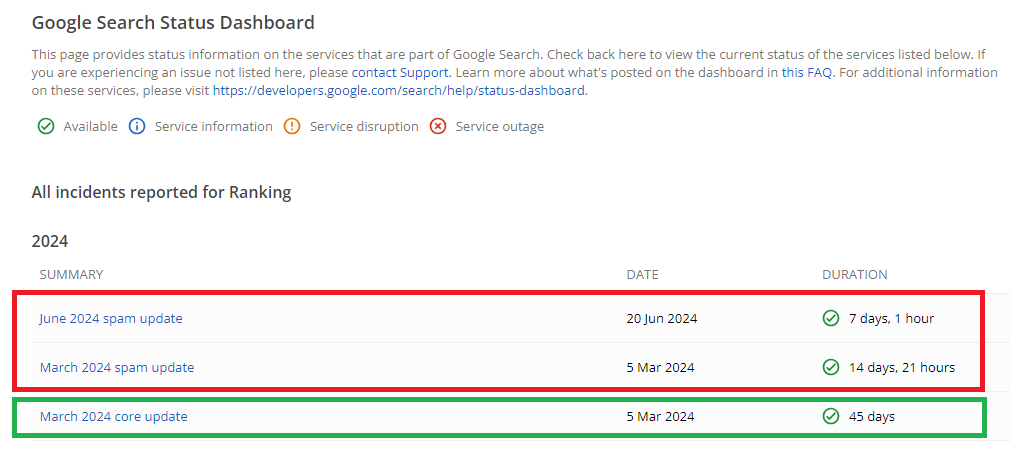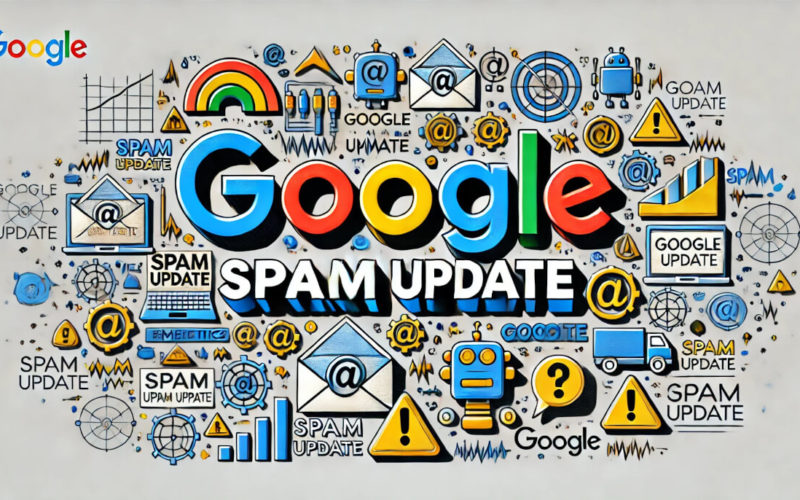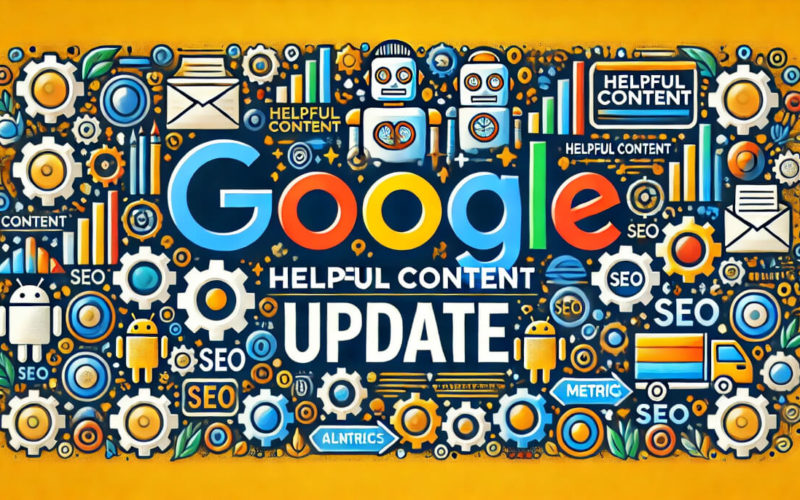In the world of digital marketing, and more specifically SEO, staying updated on Google updates is necessary to ensure that our strategies remain effective. In this case, the Google Spam Update emerges as a set of changes made by the company with the aim of improving user experience and clearing search results of excessive useless content.
Do you want to know how to deal with these updates? Don’t worry! We’ll take a historical tour of all the Spam Updates that have occurred (2021-2024), explain what they are, and highlight their main differences from the Google Core Update, which often causes confusion.
What is the Google Spam Update?
Before diving into all the information on these updates, it’s essential to understand what the Google Spam Update is. It’s an update to Google’s search algorithm, aimed at removing websites from search results that attempt to deceive users through dishonest or manipulative practices, also known as SPAM.
This update is part of Google’s ongoing efforts to improve the quality of its search results and ensure that users find much more reliable and relevant information.
Why is the Google Spam Update important?
If you’re wondering why the Google Spam Update is significant, here’s a breakdown:
- Content quality: This update helps maintain a high standard of quality in search results by removing sites that use deceptive tactics, such as keyword stuffing without relevant content or creating artificial backlinks to manipulate rankings.
- User experience: By reducing the presence of spam sites, users can enjoy a better search experience, easily finding useful content that effectively answers their queries.
- Transparency and trust: These updates enhance trust in Google’s results. Users can feel confident that the results they receive are not manipulated by spam techniques.
- Benefits for honest webmasters: Websites that follow good SEO practices and create high-quality content will be rewarded with better search rankings, promoting fair and ethical competition.
How does it affect websites?
Websites currently engaging in spammy practices, such as duplicate content, excessive intrusive ads, or deceptive backlinks, may experience a significant drop in traffic due to penalties from Google.
How can you avoid it? For website owners, it’s crucial to stay up-to-date with the best SEO practices and avoid any technique that could be perceived as manipulative or dishonest.
If you want to learn about all the Spam Updates that Google has made, you’ll need access to Google’s Search Status Dashboard, where you can see the following notifications:

As you can see, the sections marked in red correspond to Spam Updates, while the green is the March Core Update. If you scroll down, you’ll find the updates from other months and/or years. If you’re wondering about the difference between these two updates, don’t worry, we’ll explain it clearly later.
Google Spam Update June 2024
Let’s start with the most recent Google Spam Update, which took place on June 20, 2024, aimed at reducing spam and low-quality content in search results. This update is a continuation of the March 2024 update but is unrelated to the abuse of reputation and authority on websites.
It’s worth noting that this update does not affect link policies and has not been referred to as a “Link Spam Update“.
Recommendations for website administrators
If you are a site owner and have noticed a drop in visibility, I recommend reviewing Google’s Spam Policies to identify potential violations. Affected sites may take months to recover due to Google’s periodic updates, and that’s if you can address the issue.
It’s important to highlight that Google has confirmed this as a “routine spam update” and committed to posting a notice on the Google Search Status Dashboard once the implementation is complete.
The company has not provided detailed information on the specific changes or the percentage of searches affected by this update. Is this unusual? In fact, Google often does not share all the details about its algorithm changes, leaving us to figure them out ourselves.
In conclusion, we can semi-confirm that the Google June 2024 Spam Update is a routine update aimed at improving the quality of search results by eliminating spam content. Website administrators should be aware of Google’s Spam Policies and take corrective measures if they observe a drop in visibility.
Google Spam Update March 2024
Now, let’s expand the list with the penultimate Google Spam Update of 2024, from March 5. In this case, Google introduced changes to search algorithms and spam policies aimed at improving result quality for users, nothing too different from what we already know.
This update specifically focuses on improving the quality of search results, reducing the prevalence of content created solely to attract clicks, and increasing the visibility of useful content. It’s more complex than usual updates, involving changes in multiple core systems and using various innovative signals to assess content usefulness.
The implementation lasted up to one month, influencing ranking fluctuations. If we had to give you a recommendation, it would be to ensure your content is useful, reliable, and people-focused. Those whose content isn’t ranking well should consult Google’s help page on creating useful content.
New spam policies
During this Spam Update, Google introduced three new policies to address practices that degrade the quality of search results:
- Expired domain abuse: The purchase and use of expired domains to manipulate search rankings with low-value content.
- Scaled content: The generation of large amounts of unoriginal content to manipulate rankings without adding real value.
- Reputation abuse: Publishing third-party content without proper oversight to exploit the host site’s ranking signals.
Violating these policies can result in reduced search presence or, in the worst case, complete removal from Google’s index.
Google Spam Update October 2023
The Google Spam Update on October 4, 2023, is an algorithm modification designed to combat various forms of spam in search results. Its primary goal is to improve the quality of the information users receive by penalizing websites that use deceptive tactics and promote low-quality content.
Key focuses of the update
This October 2023 Spam Update had certain peculiarities, targeting the following practices:
- Cloaking: Penalizing sites that show different content to search engines than to users, emphasizing transparency and uniformity.
- Hacked websites: Focusing on de-ranking compromised sites to protect the accuracy of search results and user security.
- Automatically generated content: Reducing the prevalence of unoriginal, low-value content, promoting authentic and useful content.
- Copied content: This update discourages duplicating content from other sites without adding value, encouraging content creators and webmasters to produce original, plagiarism-free content.
What impact can be expected on websites?
Once all these measures against the aforementioned practices are applied, the following outcomes are likely:
- Visible spam reduction: A noticeable improvement in search experience as spam content decreases.
- SEO adjustments: Sites that use spam or over-optimization techniques may see their rankings and traffic drop.
To avoid getting caught up in these practices and face consequences, we recommend the following:
- Focus on content quality: Create unique, educational, and relevant content.
- Avoid deceptive tactics: Don’t use cloaking or copy content. If using AI for text generation, ensure it provides relevant information, avoids repetition, and doesn’t overuse targeted keywords.
- Website security: Strengthen defenses against hacking.
- Quality backlinks: Focus on creating high-quality inbound and outbound links, prioritizing quality over quantity when building a link-building strategy.
- Use the disavow tool: It’s recommended to use this tool to remove low-quality, dubious, or irrelevant links.
In summary, we can confirm that the Google October 2023 Spam Update emphasizes the importance of maintaining ethical, user-focused SEO practices, ensuring a better search experience and a more robust and secure online presence.
At some level, this update is not vastly different from other algorithm changes we’ve seen so far in this article, but it’s notable that it delves deeper into internal and external linking.
Google Spam Update October 2022
In the distant year of 2022, it’s worth highlighting that the Google Spam Update, which took place on October 19, was one of the fastest implementations Google has made to its search algorithm. This update was completed in just 42 hours, much faster than previous updates, which typically take several days.
What was the goal of this algorithm update? Well, the main objective was to improve the quality of search results by reducing the prevalence of mass and repetitive spam. Sites using these tactics were hit with a drop in organic rankings and, consequently, in their views.
What impacts were observed?
The most noticeable impacts during this period were:
- Impact on traffic and ranking: Although there were no significant initial complaints from site administrators, tracking tools showed large drops in the visibility of some websites.
- Algorithm consistency: Google continued adjusting its algorithm to ensure users receive quality content, penalizing spam tactics such as cloaking, copied content, and hacked sites.
Google Spam Update November 2021
The Google Webspam Update, which took place on November 3, 2021, was announced via Twitter. Its main goal was to identify and penalize low-quality websites, aiming to improve the quality of search results. This update is part of Google’s ongoing efforts to keep its search engine free from spam content and ensure users find valuable and relevant information.
Webmaster Guidelines and E-A-T
Google advised the SEO community to follow its Webmaster Guidelines and focus on creating high-quality content based on the concept of E-A-T (Expertise, Authoritativeness, Trustworthiness). This approach ensures that the content provided to users comes from experts, authorized sources, and is trustworthy.
Impact and reactions
Overall, the SEO community reacted positively to the announcement, as it promotes the creation of useful and high-quality content. However, it’s important to remember that sites not adhering to Google’s guidelines may be penalized with lower rankings or even removed from search result pages.
Additional resources
Google also released an explanatory video about what qualifies as spam content and why it’s harmful. If you’re unfamiliar with Google’s Webmaster Guidelines, we recommend reviewing them to avoid penalties and improve your web content quality.
In summary, the November 2021 Webspam Update emphasizes the importance of adhering to Google’s guidelines and focusing on producing high-quality content, benefiting both content creators and end-users.
Google Spam Update June 2021 (Part 2)
In mid-2021, specifically on June 28, Google launched several key updates for search engine optimizers (SEOs), one of the most notable being the June 2021 Spam Update, which is the second part of the earlier update. This update focused on detecting and penalizing low-quality websites to enhance the security and effectiveness of searches.
Key features
Some of the main features of these algorithm updates include:
- Objective: The update aimed to eliminate backlinks from low-quality websites, commonly used for phishing and stealing personal data.
- Global impact: This affected both web and image searches worldwide, penalizing sites with dishonest links and spam content.
- Importance of security: Google recommended site operators review their site security to protect against hacked spam and ensure compliance with its Webmaster Guidelines.
Implications for SEO
Regarding SEO, it’s worth highlighting that this Google Spam Update brought some innovations in the following areas:
- Backlinks: The quality of backlinks became more crucial, with Google identifying and removing dishonest links that violated its guidelines.
- Content quality: Maintaining high-quality content and following Google’s E-A-T (Expertise, Authoritativeness, Trustworthiness) guidelines became fundamental for SEO practices and webmasters to ensure the health and growth of each website.
- Technical analysis: Finally, but never less relevant, it’s necessary to analyze and evaluate backlinks and internal links, as this practice became essential for improving SEO and user experience.
Google Spam Update June 2021 (Part 1)
Finally, or rather initially, as this was the first part, we have the Google Spam Update that took place on June 23, 2021.
This was the first part of a two-phase update, with the second phase scheduled for June 28, continuing to modify some aspects even until early July.
Features of the June 2021 Core Update
The goal of this first algorithm change regarding spam was to remove web pages from results that attempt to deceive users with low-quality content, copied material, or low-quality links. To clarify this further, it’s important to know what Google considers spam, as the concept varies for everyone.
Google defines spam as content that does not offer real value to the user. This includes:
- Copied content: Material duplicated from other sites without original contributions—nothing that can’t already be found on another site offering the same.
- Sparse content: Pages with very little text that do not adequately respond to the user’s search intent. It’s worth noting that while Google emphasizes this, the priority is always to give the user what they need. If the answer is short because that’s exactly what they’re looking for, then it’s fine.
- Low-quality links: Backlinks from irrelevant or low-authority sites that do not contribute to user experience or are artificially created to boost a website’s authority in a short time.
To avoid penalties from these updates, webmasters and SEOs should focus on creating original, valuable content and avoiding Black Hat SEO practices, such as purchasing low-quality backlinks or using deceptive techniques to improve rankings.
Core Update vs. Spam Update: What are the differences?
If your rankings have dropped recently, it’s important to know whether it’s due to a Google Core Update or a Spam Update. Here are some tips to differentiate the effects:
- Core Update: If your website follows good SEO practices and doesn’t engage in spam techniques, it’s more likely that changes in your ranking are due to the Core Update. This update can affect all websites, regardless of niche or content.
- Spam Update: If you’re using spammy practices on your site, it’s likely that you’ve been negatively impacted by the Spam Update. Make sure to review your site to remove any spam elements and adhere to Google’s guidelines.
Have you done something wrong with your site? Only you know. Remember, these updates have been a constant in the SEO world over the past few years, so you must adapt to them to improve your online visibility.
How to work correctly following Google Update guidelines?
To maintain and improve your website’s presence in search results, it’s essential to follow the best SEO practices and adapt to the updates that Google gradually releases.
Working in SEO and digital marketing isn’t just about optimizing for search engines; it’s also about offering high-quality content and a positive user experience, as this is a factor that Google and other search engines are prioritizing more and more.
Adapting to the changes brought by the Google Spam Update is crucial to avoid penalties and improve your website’s visibility and reputation.
At MD Marketing Digital, we get it!
At MD Marketing Digital, we have SEO and digital marketing professionals who can help you navigate these spam-related changes and optimize your strategy. This way, you can maintain and improve your online presence, reaching users who visit your site and find valuable, relevant information—optimized to meet their needs without the algorithm thinking it’s spam or a negative tactic.
Contact us today and take your website to the next level!
- Google Core Update: History of Major Updates - December 17, 2024
- How to Create an Effective SEO Strategy in 2024? - November 8, 2024
- Google Helpful Content Update: A History of Major Google Updates - August 2, 2024
¿Qué te pareció este artículo?
What do you think about this post?





Interesting post, I bet you will need to keep updating this post with the rollercoaster in visibility. I´ll stay tuned mate. Thanks